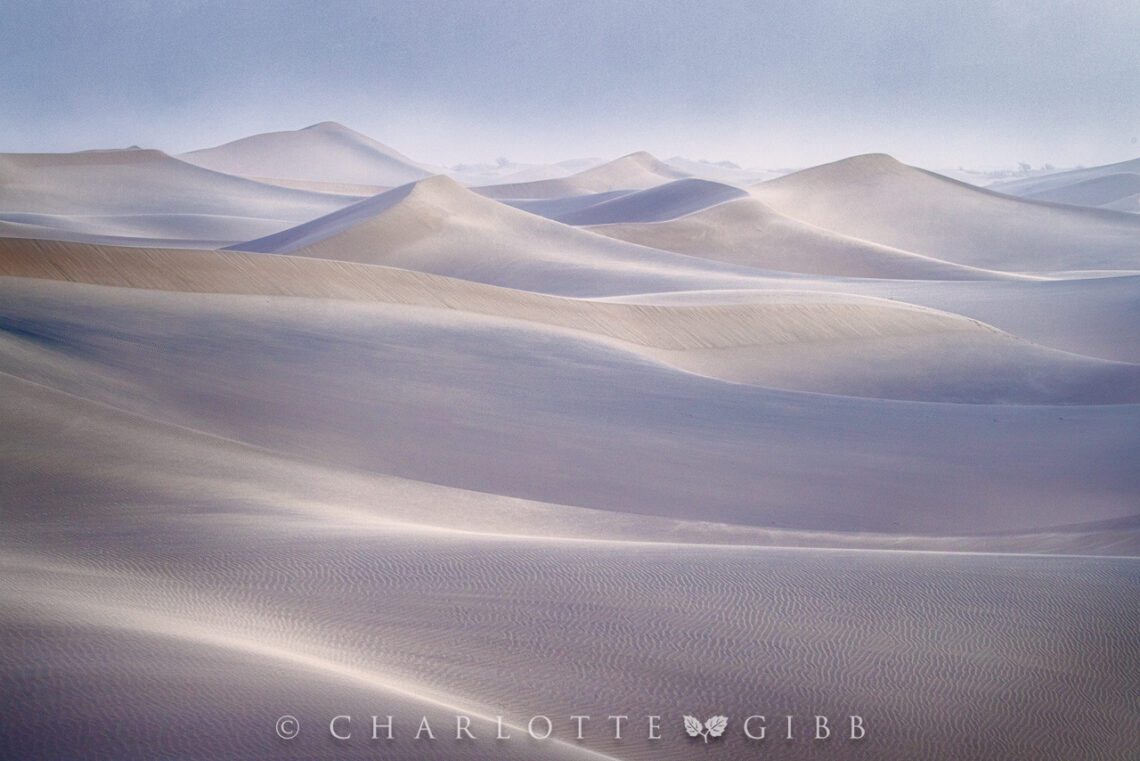
A Mountain Girl Goes To Death Valley
“Standing there, gaping at this monstrous and inhumane spectacle of rock and cloud and sky and space, I feel a ridiculous greed and possessiveness come over me. I want to know it all, possess it all, embrace the entire scene intimately, deeply, totally…” ― Edward Abbey, Desert Solitaire, about his time in Death Valley and Arches national parks.
Edward Abbey wrote, “There are mountain men, there are men of the sea, and there are desert rats.” Where is your happy place? For me, it is the mountains that make my soul sing. I grew up in Northern California, playing in the forests and creeks around our home. The mountains were full of life — birds, coyotes, deer, rabbits, pollywogs, bats, frogs, fish — all of which captivated my young imagination.
So, when I ventured to photograph Death Valley in January, I felt strangely off-balance. There were mountains, yes, but where were the trees, the flowing rivers and creeks, and the animals? I found this national park largely devoid of life, as its name implied. Compared to my beloved Sierra Nevada, Death Valley seemed very strange and mysterious. I did not feel at home in the desert as I did in the mountains, and I knew that photographing here would be a challenge for me.
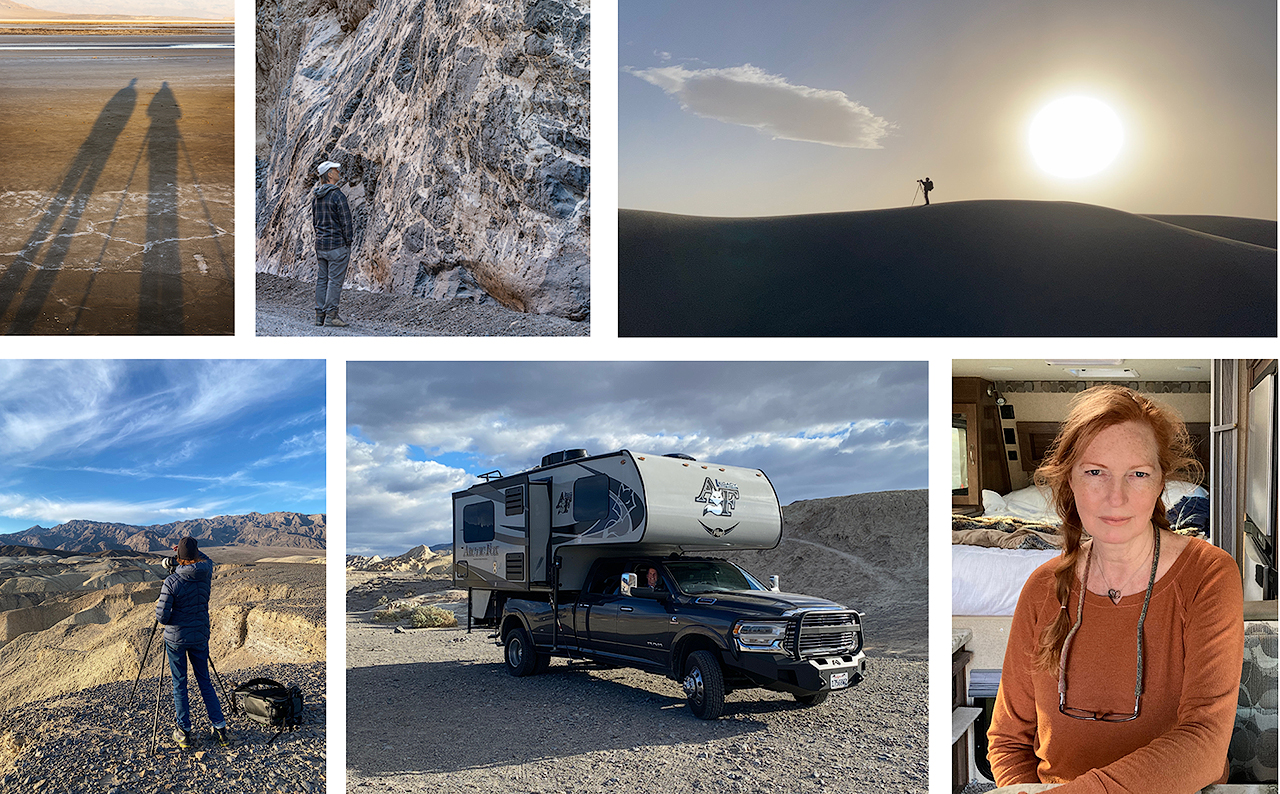
Making sense of the landscape
I often advise my students that, in order to make a truly beautiful landscape photograph, the photographer must feel an authentic connection to their subject. I definitely did not feel connected to this dry, arid landscape. Not only was it unfamiliar to me visually, I had very little knowledge about its geology, history, or biology. Since I try to practice what I preach, I decided to lean into my natural curiosity to spur my creativity.
I pondered Death Valley’s sand dunes. Why did they form in specific places, near the base of mountains? I fell in love with the graceful alluvial fans that formed over millions of years at the mouth of canyons. And, I learned about the endangered little Death Valley pupfish that thrive in Salt Creek, although I didn’t get to see one. I read about the geologic history of the obscenely colorful terrain at Zabriskie Point and at Artist’s Palette, and learned that what I was seeing was a piece of our planet’s violent history. As I learned about Death Valley, my puzzlement gave way to an appreciation for its raw beauty.
A land of contrasts
Death Valley is full of extremes and contradictions. A rare rainstorm in October can cause a wildflower super-bloom in the Spring, bringing staggering brilliance to the otherwise bleak landscape.
Here’s another Death Valley fun fact. Badwater Basin is the lowest elevation in North America, at 282 feet below sea level. While, just 85 miles away is Mount Whitney, the highest point in the contiguous United States, with an elevation of 14,505 feet.
Speaking of extremes, the hottest air temperature ever recorded on Earth was 134 °F on July 10, 1913, in Death Valley’s Furnace Creek. The same year, the valley’s lowest temperature was recorded at just 15 °F.
The mystery of the Sailing Stones
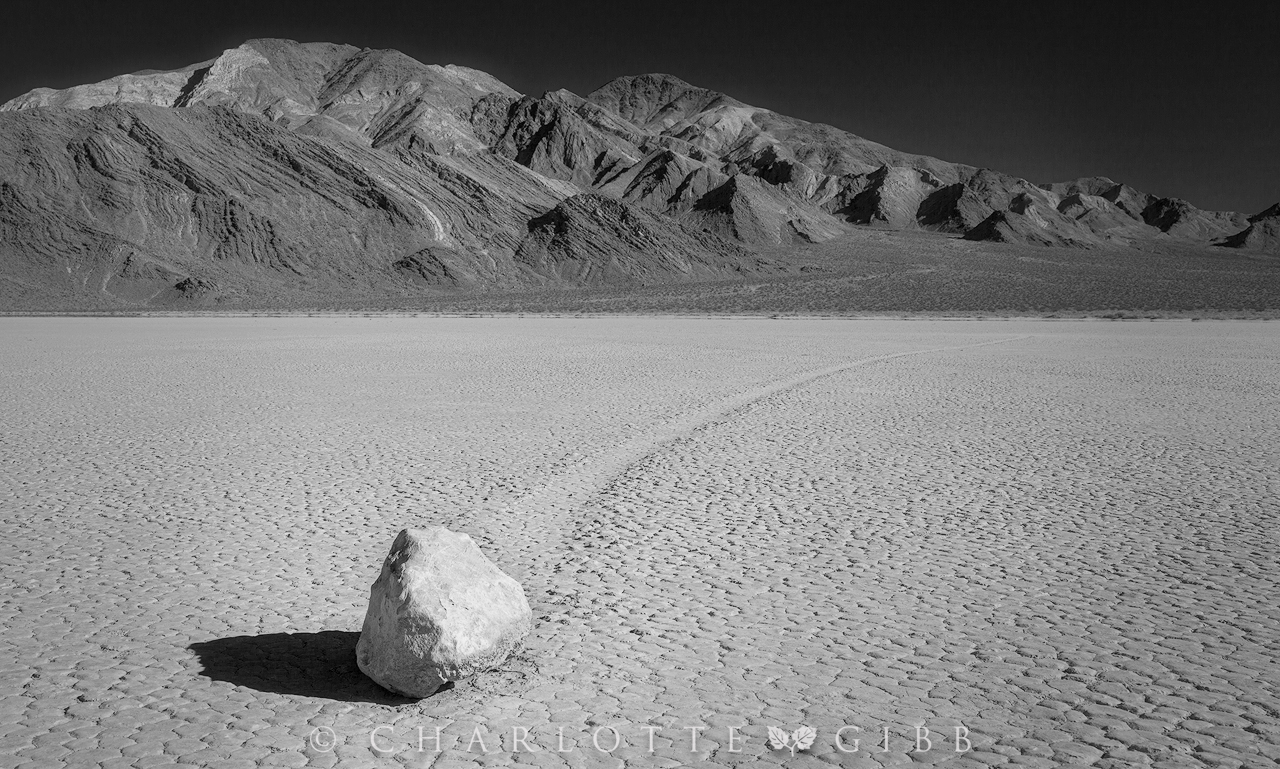
The most famous Death Valley mystery was around the “sailing stones” at Racetrack Playa. This remote playa is exceptionally flat and level with the north end being only 1.5 inches higher than the south end. Large boulders are washed down from the surrounding mountains during storms and come to rest on the playa. As evidenced from “trails” indented in the cracked mud, these boulders travel around the playa, but no one had ever witnessed them moving. I had read about this phenomenon and even photographed the boulders with their long trails back in 2013. I was a little sad when, later the same year, scientists drilled holes in several of the boulders, attached GPS devices to them, and ultimately uncovered the mystery of the rock trails.
Making the connection
Exploring these mysteries and many others helped me begin to appreciate the unique and extreme qualities of the park, and ultimately connect emotionally to it. In the end, I felt that I came away enriched by the experiences, and I managed to create a few photographs that were acceptable. But, I think it will take many more visits before I can be satisfied that I have expressed what I feel about Death Valley in my photographs. There are still more to discover on future trips.
I won’t tell you how the boulders move across the desert floor. It is certainly easy enough to find out with a simple Google search. Sometimes, it is more fun to discover things for ourselves, and allow others to enjoy the same pursuit.
About the Photos
Each of my photographs below has a bit of a story to go with it, which I’ve included in the captions. Click on the image to enlarge it.
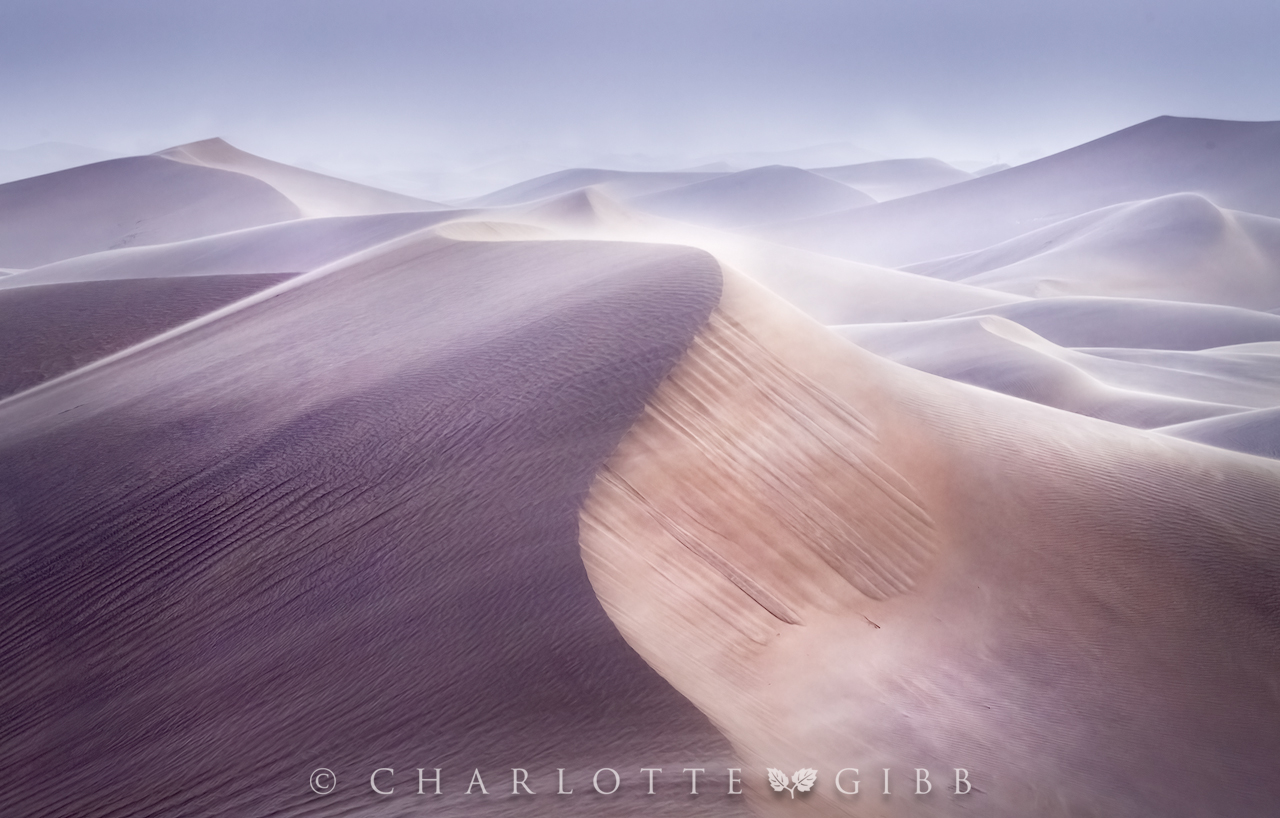

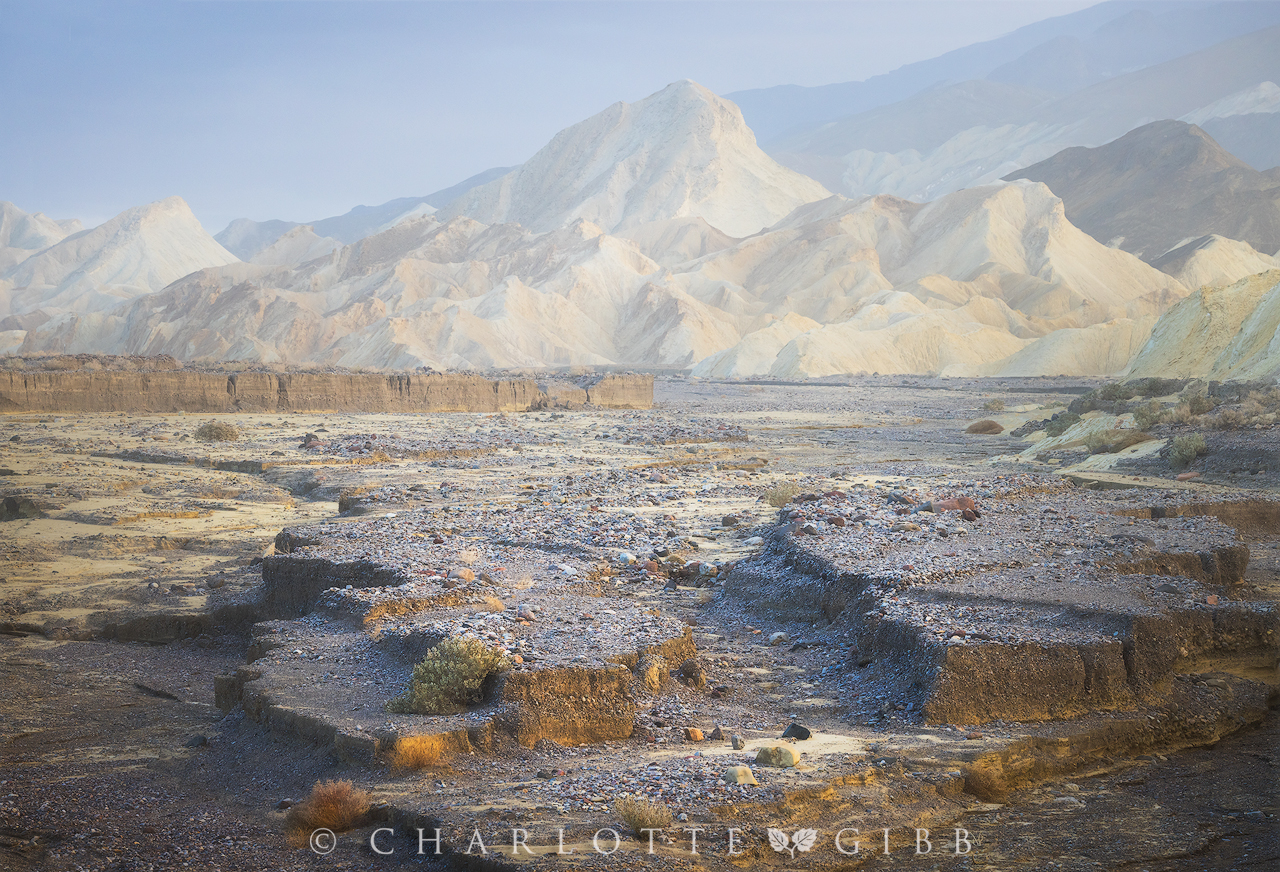
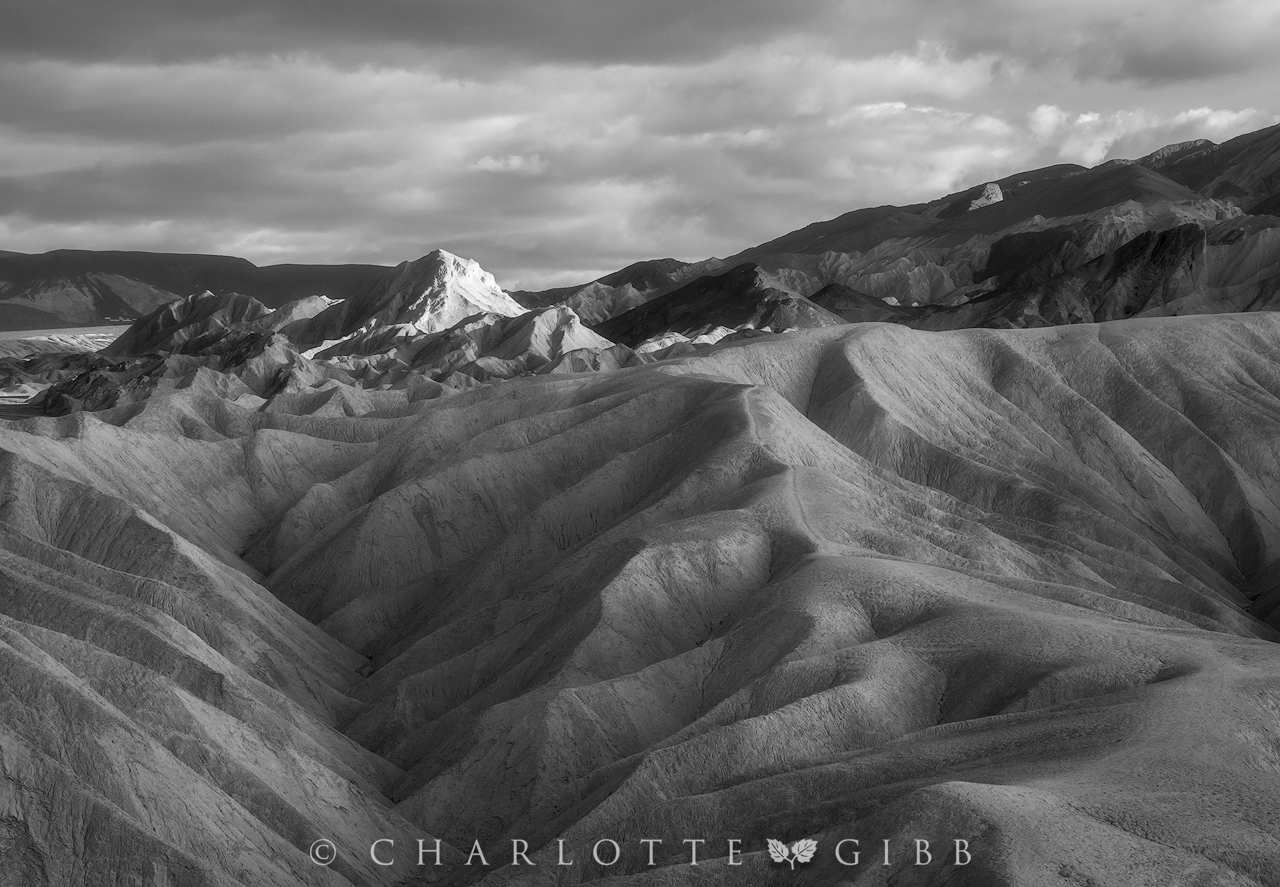
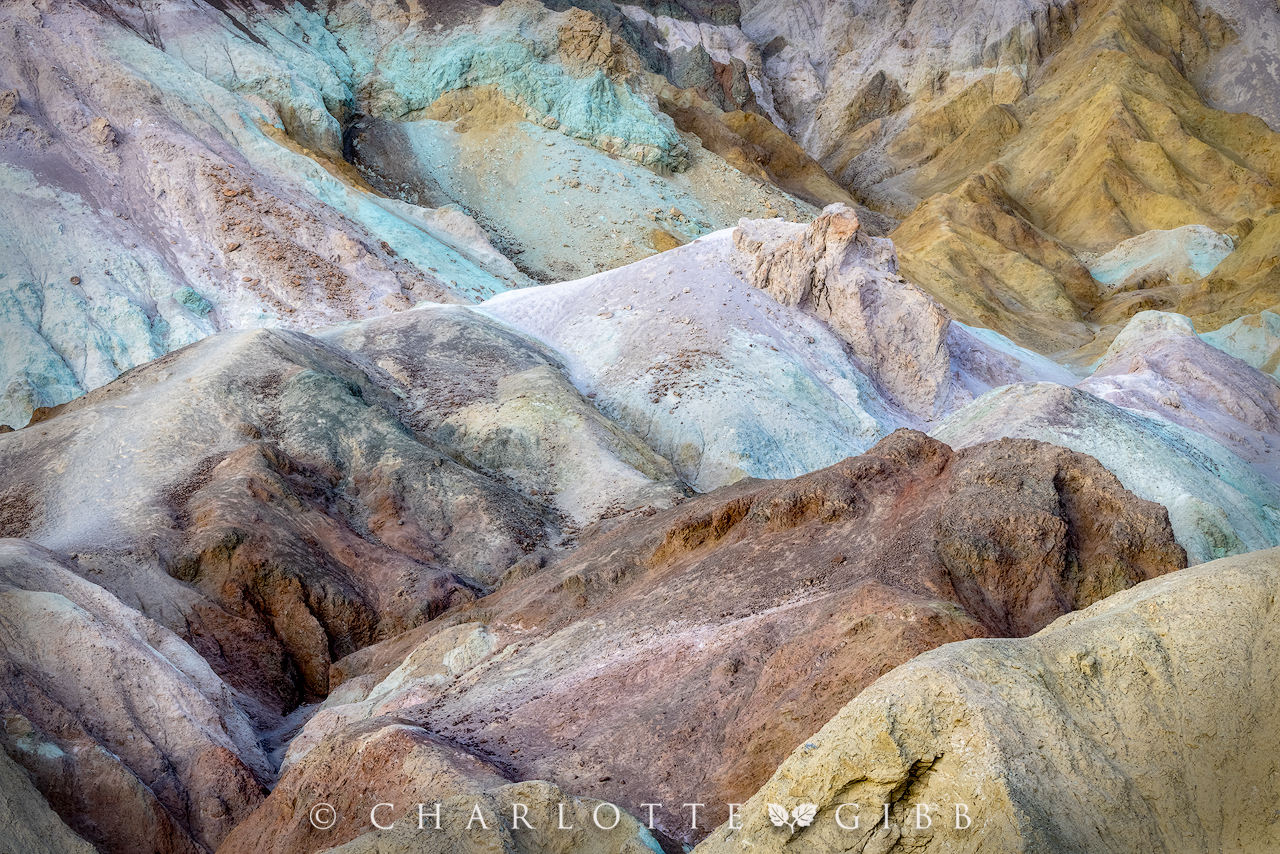
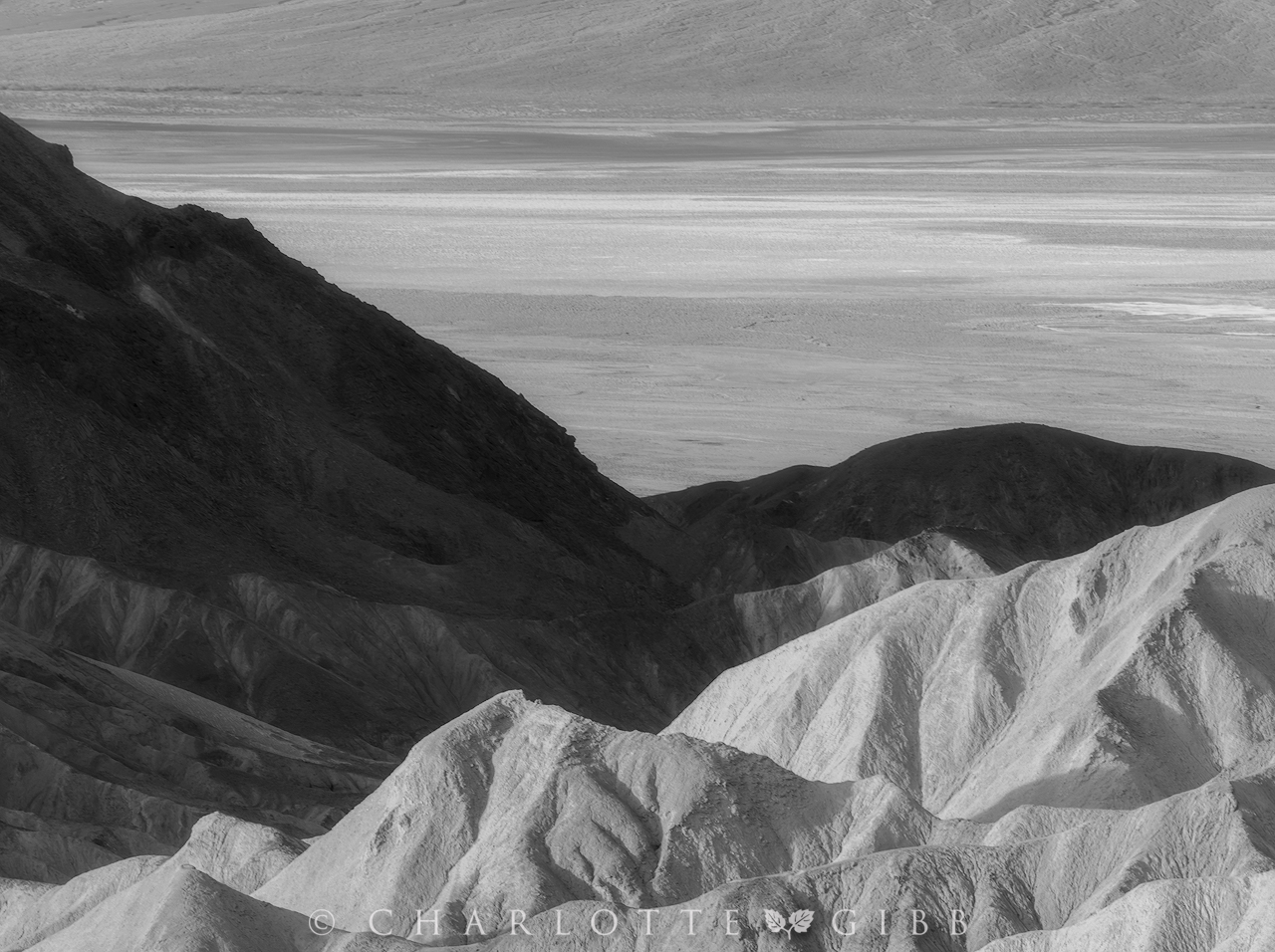
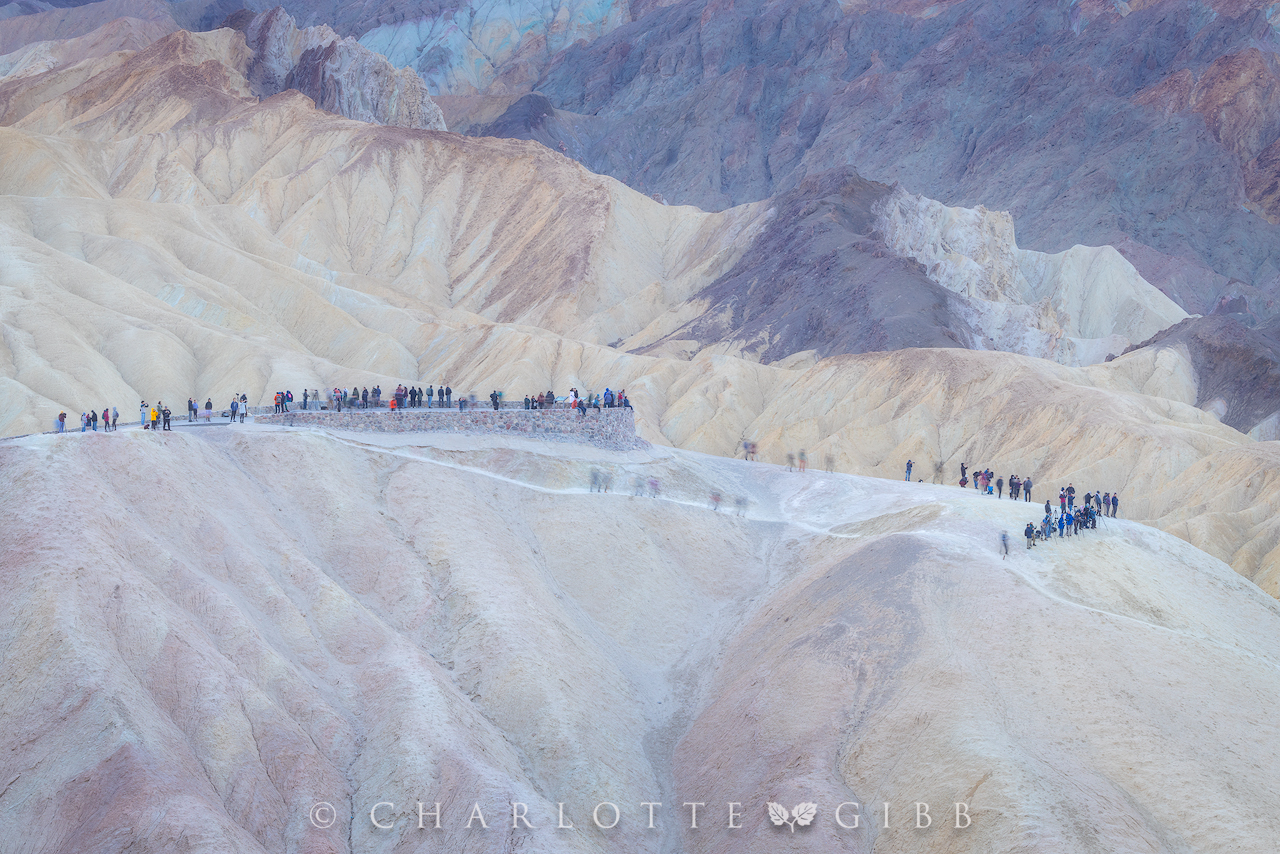
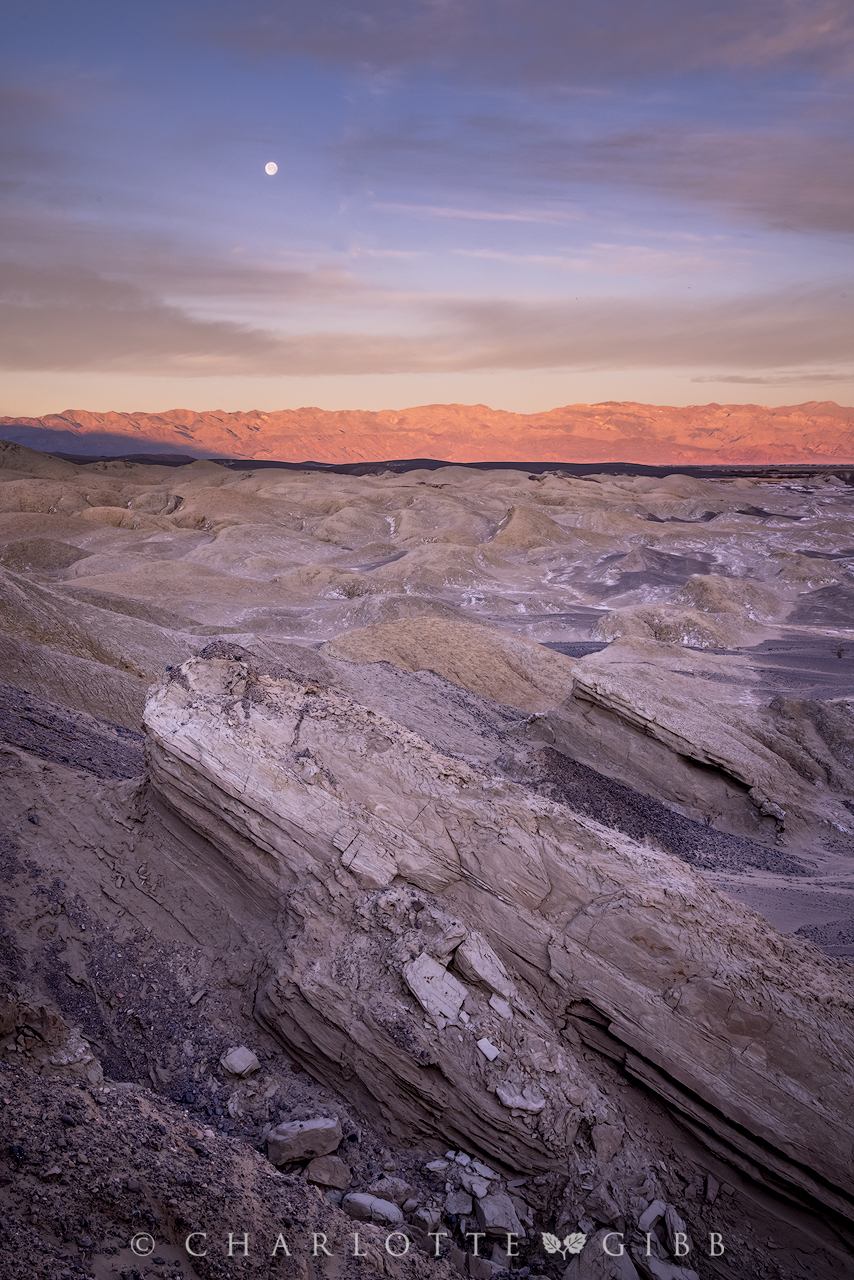
charlottegibb
Charlotte Gibb is a contemporary fine art photographer based in the San Francisco Bay Area specializing in landscapes of the Western United States. Her images are often taken in familiar places for the well-versed landscape photographer, but she prides herself on her keen eye toward the subtle and sometimes overlooked beauty of the natural world. Growing up among the beautiful mountains of Northern California, she considers herself a student of life, learning about people, nature, music, and photography along the way. But always, her life-long passion for the wilderness shines through it all. Charlotte earned her Bachelor of Arts degree from the Academy of Art University in San Francisco and has exhibited her work in several solo shows throughout California. Her darkroom, long gone now, has been replaced with digital darkroom tools, and her style has evolved from a somewhat journalistic approach, to one that pays tribute to the natural world.



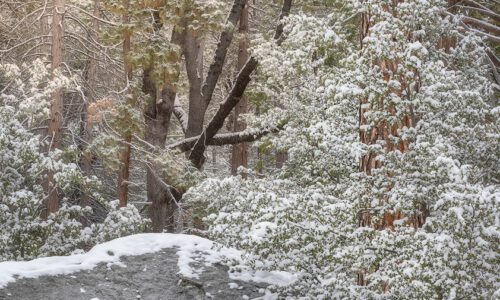
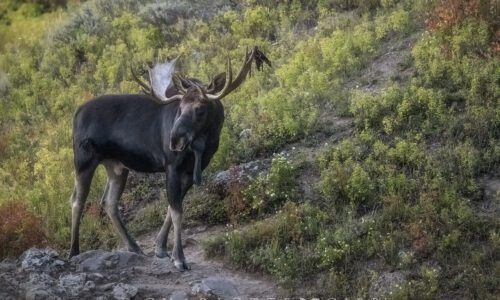
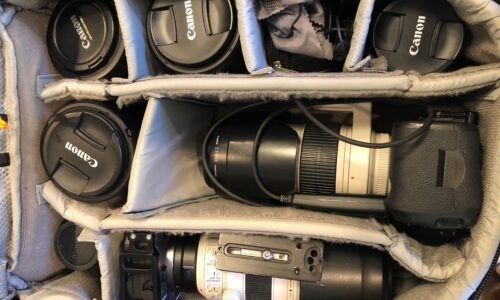
8 Comments
Kevin McLin
Charlotte, I don’t know how you can not be pleased with these images. They are exquisite. The one of the dunes in the windstorm is one of the most gorgeous images I have seen. Ever. Brava! Thanks for sharing your photos and your experience of Death Valley. These remind me that I am overdue for a return visit there myself.
charlottegibb
Wow, thank you so much, Kevin. I’m actually amazed that I was able to get anything useable in the dunes. I had my camera out for maybe a TOTAL of 5 minutes. I was certain that the sand would wreak havoc on my gear. I’m still not sure I believe Michael that my camera would be fine!
John Walker
Charlotte, I wish so much you had done the photography for my geomorphology textbook 🙂
charlottegibb
I wish you could have explored Death Valley with us so you could explain what we were seeing! I sometimes wish I had studied geology, but it’s never too late to learn!
Geoff Allen
Charlotte,
A wonderful set of images, and the stories were fun to read. I especially like “The Wash.”
charlottegibb
Thank you, Geoff. I like that one a lot as well. I have several compositions from that spot, but I picked that one because I used a longer focal length, which made the mountains more prominent in the frame.
G Dan Mitchell
First… ” However, my pal, Michael Frye, was intrepidly tromping around the dunes…” It is official, from now on he shall be known as “Intrepid Tromper Michael Frye.”
Almost ran into you and Gary in DEVA, but apparently you departed the day before I arrived. My later arrival meant that I missed most (but not quite all) of the sandstorm fun. Mine came a few days later in a more remote area of the park and was much more subdued.
Your transition from “just give me the Sierra” to a broader view that encompasses the desert reminds me of my own similar transition. (Before the desert transition, it took a visit to Alaska to convince me that, yes, there ARE mountains other than the Sierra worth seeing.) I will never forget my literal first view of Death Valley. On a spring day about 25 years ago we arrived after sunset and set up tents at Emigrant campground in the dark. The next morning I unzipped the tent and stepped out to see it for the first time. I was stunned by the immensity of the scene and did not really quite know what to make of it. By the end of that week I had, or at least thought I had, experienced much of this new world – including high winds, a sandstorm, snow (!), running out of water, the spare terrain, and more.
Perhaps needless to say, I was hooked, and I’ve been going back ever since, gradually and continually pushing out the boundaries of my knowledge and love of the place and learning how to see it.
Welcome!
Dan
charlottegibb
Michael has many other names by which he is known. He also associated with the exclusive Yellowstone group known as the Geezer Geyser Gazers.
Yes, we missed you at DV by just half a day. We decided to take off a little early to take care of some things that needed our attention at home.
Thanks for sharing your own thoughts about how the desert worked its way into your heart. I can see that happening to me as well, although it is more of a slow burn. We shall see.